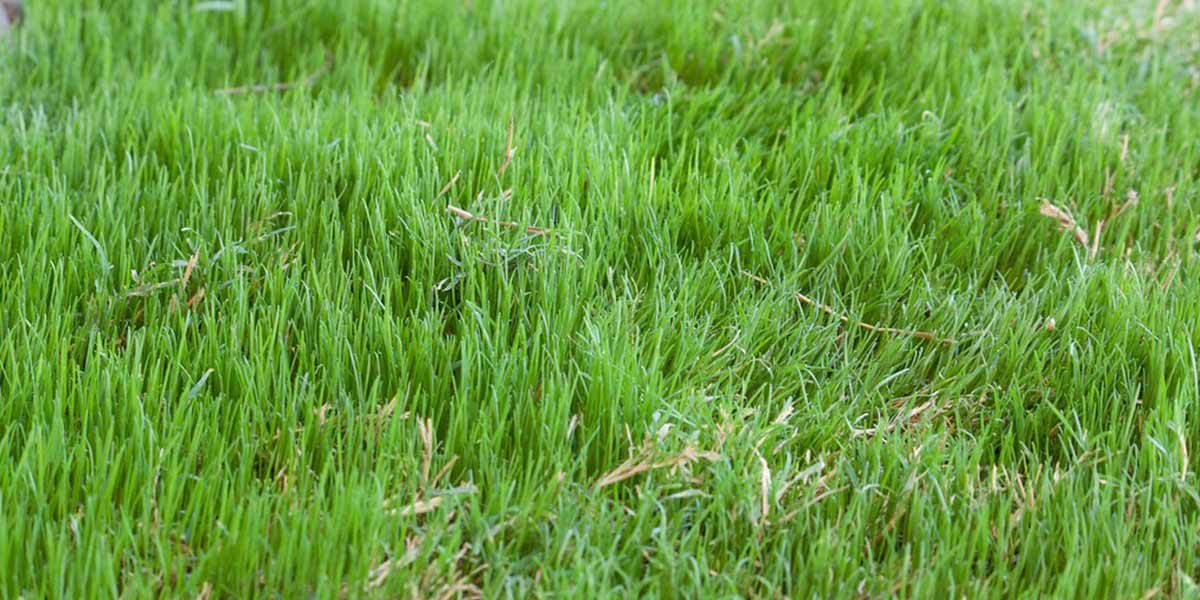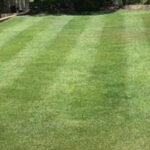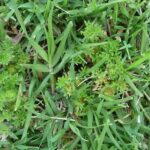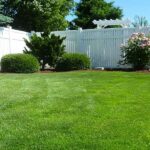Wintergrass is a significant weed problem in many areas, and control is essential for the following reasons:
Wintergrass is a prolific seeder that will eventually overtake the lawn in winter.
It seeds in Autumn, Winter and Spring and dies off throughout prolonged hot periods in the Summer. This leaves a weakened lawn that will become infected with even more Wintergrass the following cool season.
It sets seed even at very low cutting heights.
Control & Management
The key to controlling Wintergrass lies in its management using both chemical and cultural practices. Good cultural practices means keeping the lawn well maintained by regular mowing and fertilising, and not allowing bare patches to develop which will offer an ideal seed bed for Wintergrass germination.
Light infestations of seedlings may be easily hand weeded as Wintergrass has a very shallow root system.
Chemical Management
There are two main ways of approaching the management of winter grass with chemicals… pre-emergent control, which means spraying the lawn before the weeds emerge, or selective post-emergent control once the weeds have already germinated.
I prefer to use pre-emergent control for Wintergrass. A common saying is “One year of seeds brings seven years of weeds!” This might sound like an “old wives tale” but in fact, it’s true. Dealing with weeds before they have the chance to seed is the most efficient and effective way to have a healthy lawn. The use of a residual pre-emergent application can also eliminate the need for multiple post-emergent herbicide applications.
Common questions or concerns I hear about using a pre-emergent spray on Wintergrass include the following:
“It is February/March and I don’t have any Wintergrass. It seems a bit silly and a waste of money to spray nothing.”
Some lawns do not have a Wintergrass problem. This may be due to an extremely strong lawn that covers all areas well, with no weak spots. It could be due to good hygiene since the lawn was established, with minimal shade, cool, damp or worn areas. These people are lucky and should hold on to their money and spend it on anything else in the garden!!
However once a lawn situation shows a susceptibility to Poa (Wintergrass) it is a safe bet that it will re-appear yearly (as an annual grass does) and strengthen its hold in your lawn each year.
“Why shouldn’t we just wait until it is all up for the year and kill it then”?
Preventing seed production and plant reproduction are the compelling reasons for pre-emergent weed control strategies, as mentioned above. Wintergrass has an extended germination period that lasts from early Autumn right through Winter and into Spring. A pre-emergent product applied in Autumn kills seed roots and shoots before they emerge through the soil and set a seed head.
Removing Wintergrass (and some weed/grass species) after it has germinated and established still leaves the problem of its root mass underground. The Wintergrass plant (a monocot) has a thick fibrous root system, with the roots running deeper than its height on the surface. If mechanically removed, the roots hold onto soil, leaving pocks/divots in the lawn surface. If controlled with chemicals, the root mass rots underground but remains in the soil, leaving bare areas above which detract from the look of your lawn, and which provide an excellent place for more weeds to take hold.
“I have sprayed pre-emergent this year and had a good result with just a few plants breaking through. So does that mean I’ve won the war against weeds? I won’t have to spray anymore?”
It needs to be noted that a successful season’s control doesn’t mean you have won the war against that weed in that situation. Shaded, worn, sparse and damp areas are prone to annual attacks of weeds (in this case Wintergrass) year in, year out. Vigilance and organisation go a long way towards effective weed control. In areas proven to be a problem, I recommend yearly or twice-yearly control, as do the manufacturers of the various products.
In my experience, the newer style Schedule 5 products (eg Barricade) give excellent season long protection, only requiring one application if applied in March, April and Early-Mid May. Unlike the Propyzamide based products (that require watering in), these products are UV stable and can wait 24 or even 48 hrs to be watered in by automatic reticulation.
However, in my opinion, the older style Propyzamide based products do still have a use in pre and slightly post emergent Wintergrass control strategies. In late May and early June, we have Wintergrass breaking the surface, signalling the end of the purely pre-emergent spray cycle. We now move into a mode of 75/25 spraying. Meaning the spraying of a Propyzamide based product (eg Poa Pro, Kerb) will provide knockdown of newly emerged Wintergrass (25%) and the yet to germinate (break the surface) Wintergrass, which accounts for 75% of the purpose of the spraying the product.
Correct spray procedure is via 2 applications, 6 weeks apart. The first application needs to be done prior to end June and watered in (by medium to heavy rainfall or automatic reticulation) during or straight after application.
This older-style approach will appeal to those who have missed the Pre-Emergent window or those who have a Buffalo lawn surface, as the Post-Emergent product sprayed mid-late Spring is incompatible with Buffalo surfaces.
“What if I don’t spray at all? Will the Wintergrass die off in the Summer?”
Yes it will. In most cases a prolonged period of 33-35oC will burn the canopy off what is a cool season grass. Unfortunately there are also exceptions to this. Some Wintergrass will persist throughout an entire year, benefiting from reticulation systems being on throughout watering season. Then the problem becomes lawn-threatening as the new germination year plants mix with the older last year plants. The multiplication of plants can lead to dinner plate-sized weeds which choke out the lawn, especially through the cooler months.
“I didn’t use a pre-emergent spray and now its mid-Winter and things are a real mess, Wintergrass everywhere. Is there anything you can do?”
Yes, we can remove mature Wintergrass with a post-emergent product. Unlike the pre-emergent products which offer residual control, post-emergent control is best done during late-Spring when ALL plants are up for the germination year. If post-emergent control is done for the first time, then pre-emergent control is recommended the following Autumn as seeds have set and plants will re-emerge the following year, even though the active population has been cleared out for this year.
Post-emergent removal in the Spring is effective, but can leave the lawn surface with numerous bare patches, pitting and poor turf uniformity as discussed above. Lawn renovation and top-dressing is then often necessary to provide an even lawn surface again.






